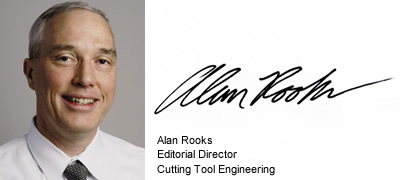In June, I visited Peerless Precision Inc., a machine shop in Westfield, Mass., outside of Springfield, which makes miniature parts for the aerospace industry, among other customers. On the shop tour, I saw something I hadn’t seen in a while—several young machinists working independently on various projects. I asked Kristin Maier, president of the shop, how she had been able to hire young machinists, a rarity in
This is an interesting counterpoint to what machine shop managers in other regions are experiencing. They claim to struggle mightily to fill open positions, adding that the candidates they do get often don’t have the requisite skills. The example of Springfield-area shops suggests that having the right training and development infrastructure in place is a key part of the process—infrastructure that has often been neglected in other areas. Indeed, because manufacturing employment has dropped, sometimes dramatically, in recent years, many machine shop programs suffer from poor enrollment and lack of funding or have disappeared entirely.
“The U.S. lags behind many rivals such as Germany, Japan and [South] Korea both in the scores of high school students on standardized tests and in providing apprenticeship and training programs,” wrote Neil Munshi in his article, “Employers’ skills gap claim does not show up in US wage data,” posted on the Financial Times Web site. Active apprenticeship programs fell from about 32,000 in 2002 to fewer than 20,000 in 2013, according to the U.S. Department of Labor.
“Critics charge that manufacturers that have spent 25 years cutting jobs, eliminating training, using temporary workers and offshoring cannot now blame the workforce’s lack of skills,” Munshi wrote.
Toni Gilpin, a labor historian, was quoted in the article saying manufacturers want “highly trained workers at cut-rate prices and they’re willing to wait until they can get that rather than absorb any training costs themselves.”
Even with the decline in apprenticeship and other training programs, some beside Munshi are challenging the existence of a skills gap. Heidi Shierholz of the Economic Policy Institute said the so-called skills gap does not appear in wage data. “This is straight-up economics—if there is a shortage of something, the price of it rises. If there’s a shortage of a type of worker, the wages of that worker should rise as employers bid it up,” she was quoted in the FT report. “Unemployed workers outnumber job openings in every single sector.”
Average wages for production workers were up 1.5 percent from May 2013 to May 2014, “which does not point to a battle to hang on to talent,” Munshi wrote.
What to make of this situation? Is there really a shortage or are manufacturers getting by via other means? With manufacturing output rising, it appears that companies are making do without filling certain jobs, possibly through more overtime and certainly through more automation. For example, Methods Machine Tools Inc., a machine tool supplier in Sudbury, Mass., reported that its automation unit has been extremely busy quoting and delivering systems, with many of them being small automation cells purchased by small to medium-size shops.
Still, metalworking operations will have to at least replace workers whose jobs are not replaced by automation. “We have an industry-wide problem with an aging workforce,” said Peerless Precision’s Maier. “Shops everywhere have more workers closer to retirement age than not. If we don’t act now, we are going to lose that tribal knowledge, which would be very detrimental. The best option is to get people when they are young and willing to learn. We need to get them trained before everyone starts retiring so we can pass that institutional knowledge on to them.” CTE

Related Glossary Terms
- metalworking
metalworking
Any manufacturing process in which metal is processed or machined such that the workpiece is given a new shape. Broadly defined, the term includes processes such as design and layout, heat-treating, material handling and inspection.
- sawing machine ( saw)
sawing machine ( saw)
Machine designed to use a serrated-tooth blade to cut metal or other material. Comes in a wide variety of styles but takes one of four basic forms: hacksaw (a simple, rugged machine that uses a reciprocating motion to part metal or other material); cold or circular saw (powers a circular blade that cuts structural materials); bandsaw (runs an endless band; the two basic types are cutoff and contour band machines, which cut intricate contours and shapes); and abrasive cutoff saw (similar in appearance to the cold saw, but uses an abrasive disc that rotates at high speeds rather than a blade with serrated teeth).
- web
web
On a rotating tool, the portion of the tool body that joins the lands. Web is thicker at the shank end, relative to the point end, providing maximum torsional strength.






